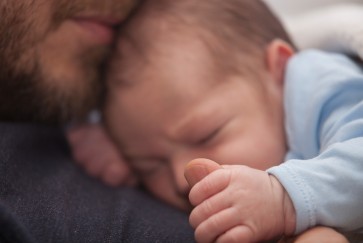Since the onset of the COVID-19 pandemic almost four years ago, people across the U.S. have reported increased rates of depression and anxiety.
While the mental health crisis has touched the lives of Americans across a broad spectrum, new Northwestern University research has found that young adults aged 18 to 39 — dually burdened by the increased economic uncertainty that often accompanies youth — did not recover with the rest of the population as the country emerged from the worst of the pandemic.
The study — led by Sarah Collier Villaume of the School of Education and Social Policy (SESP) — was published today (Nov. 30) in the journal JAMA Network Open. The researchers found persistently high levels of anxiety and depression among younger adults whether looking at groupings of ages 18-29 or ages 18-39, compared to middle adults (aged 40-59).
“For years, there has been a pressing conversation about mental health concerns among adolescents,” Collier Villaume said. “We've been thinking and talking about the challenges confronting teenagers during this contemporary moment. This is a sobering realization to see that some of those same reported stresses of being a young person in the United States extend well into early adulthood. I think that is an important thing for us to reckon with.”
The findings are based on data from the U.S. Census Bureau’s Household Pulse Survey conducted over 27 months between 2020 and 2022. The researchers’ analyses restricted the sample to 18-59 so they could compare 18-39 with 40-59. Those surveyed were asked about their experiences during the pandemic.
Analyzing surveys completed by more than 3 million adults 18 to 59, the researchers found younger adults’ self-reported anxiety and depression were more elevated than older adults’ after surges in COVID-19 case counts but decreased less following the availability of vaccination against the virus. Additionally, they estimated that approximately one-third of the age gap among individuals with depression and anxiety can be attributed to demographic differences including economic precarity, to which younger adults are disproportionately exposed.
This is a wake-up call for policymakers and for everyone who cares about the well-being of young people in the U.S.”
Among many well-documented costs of the pandemic, the mental health crisis stands out as a challenge and opportunity to better understand subsets of the population separated by age, race and economic status and address their varying needs.
Collier Villaume, the first and corresponding author of the study, is a postdoctoral fellow at the E4 Center in SESP. She conducted this study with Emma Adam — the Edwina S. Tarry Professor of Human Development and Social Policy. Adam is the head of the Contexts of Adolescent Stress and Thriving Lab at Northwestern and fellow of the Institute for Policy Research.
“Initial studies focused on the first few months of the pandemic and its effects on mental well-being,” Collier Villaume said. “Now that it has been more than three years from the pandemic’s onset, datasets like the Household Pulse Survey offer an unprecedented opportunity to examine trends in well-being through multiple years of a global pandemic.”
The highest levels of pandemic-era anxiety and depression were observed in 2020 and began to decline in early 2021, coinciding with the availability of the COVID-19 vaccination. This decline in depression and anxiety was larger for adults 40 and older, leading to a widening of the gap in anxiety and depression between those in young and middle adulthood.
The findings identified lower household income and rates of home ownership as key differences between those in young and middle adulthood. According to the study, adults aged 18 to 39 years reported lower household incomes — 60% the odds of earning $100,000 or more. It is also more likely for a young adult to be living with other people in a shared space, compared to older adults who tend to live in their own home. Better mental well-being is present in middle adulthood primarily for those experiencing relative economic stability. The authors speculate that these differences in economic conditions, among other social stressors, may have contributed to the heightened stress young adults experienced during the pandemic.
“This is a wake-up call for policymakers and for everyone who cares about the well-being of young people in the U.S.,” Collier Villaume said. “Individuals whose annual household income is less than $100,000 are potentially more vulnerable to a novel stressor like the COVID-19 pandemic, compared to those who have more economic stability. If we're seeing these higher levels of symptomology in folks who are more economically vulnerable, then our policymakers want to be thinking about how to shore up that stability during a pandemic, climate crises or other stressors.”
Interestingly, vaccinations against the virus being readily available to the public had a greater impact on the betterment of middle adults’ mental health than it did on younger adults. Greater stress relief from vaccination against COVID-19 may help to explain the reduction in anxiety and depression that adults aged 40 years and older experienced beginning in early 2021, noted the study.
“For younger adults, perhaps their symptoms were less about infection or illness and more about living through this deeply isolating and turbulent time. Their stress may have something to do with other acute stressors during this period, including the war in Ukraine, all too frequent mass shootings, repeated climate catastrophes, and police violence against people of color. While we can't tie any one of those events directly to the levels of symptoms observed in these data, we know that a lot was going on between 2020 and 2022. Those are all important things for researchers and policymakers to be thinking about,” Collier Villaume said.
Collier Villaume and her team plan to continue following these trends over time, possibly conducting a follow-up study with additional Household Pulse Survey data or other large national surveys.


